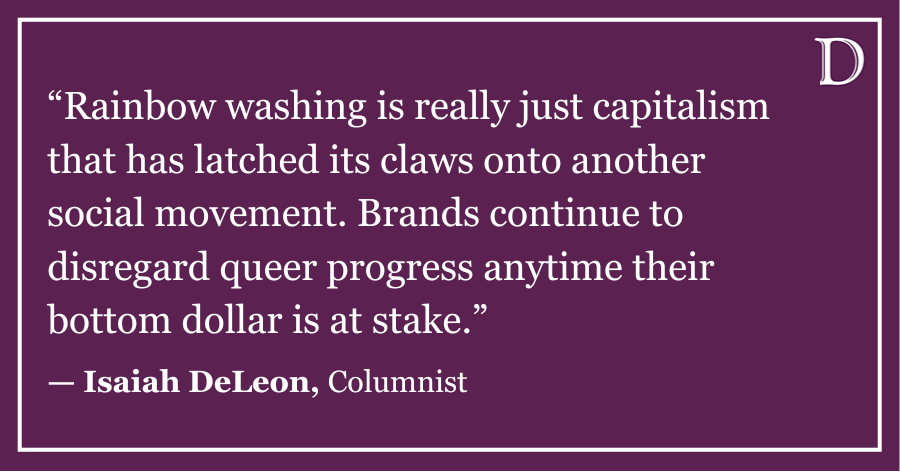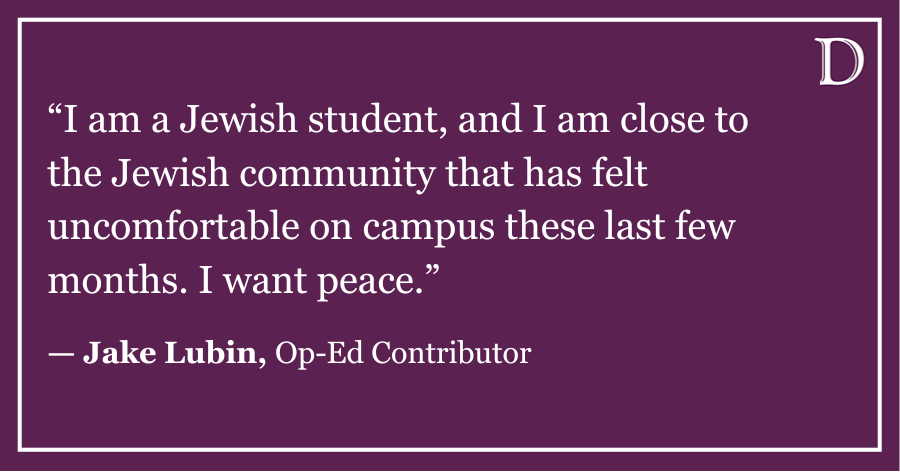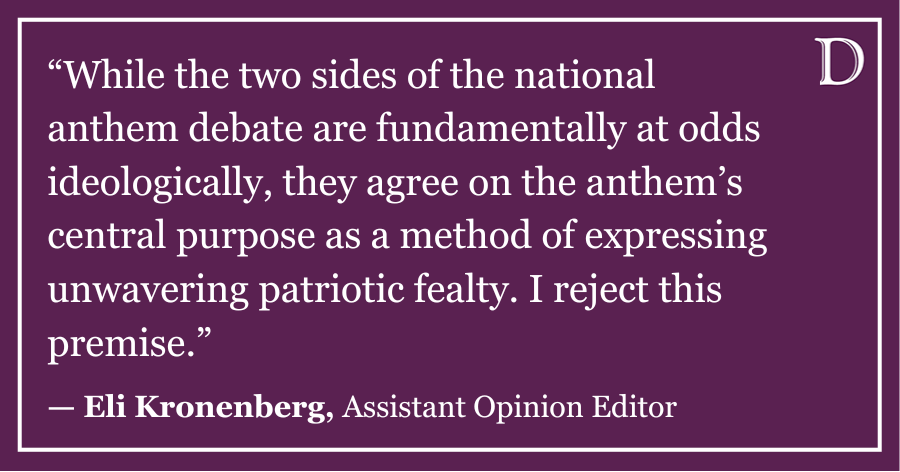In Wednesday’s edition of The Daily, Sydney Zink argued in “Affirmative action dangerously shortsighted” that affirmative action policies focused on race have created a system in which minorities receive preference over other qualified candidates and that we should eliminate affirmative action and live solely as a meritocracy. Fellow Daily columnist Jan Jaro argued in “On campuses and in workplaces, affirmative action still vital” that diversity in higher education and in the workplace makes America more competitive.
Zink’s column received a lot of attention, attracting more than 200 comments, and the overwhelming response was negative. This result is not surprising given that Northwestern is a largely liberal university. Jaro’s column went almost entirely unnoticed, however, with only one comment.
This is a problem. Our university is stuck in the “liberal consensus.” We accept affirmative action without question and attack anyone who dares speak out against it, not recognizing that affirmative action is, in some ways, a flawed and antiquated program.
Affirmative action was originally put in place as an executive order by President John F. Kennedy in 1961 and was added to the Civil Rights Act in 1964. These laws were passed to address the outrageous income gap between blacks and whites at the time. As time has gone by, however, this gap has begun to shrink, and, while minorities still earn far less than their white counterparts, we have failed to update affirmative action to include a greater number of Americans that face similar socioeconomic discrimination.
William Bowen, the former president of Princeton University, found that at 19 selective institutions, being a minority increased your chance of admittance by 28 percent, but coming from a low-income family didn’t help at all. Some will look at that first number as evidence that affirmative action policies are working. I look at the second and say they are not.
By focusing affirmative action on race, we have increased the number of minorities who attend college and are able to move into high-paying jobs. We have not given the same opportunity to poor white students who face similarly limited resources, and we have given preference to middle-class minority families over lower-income white ones who need the help even more. Class-based affirmative action would improve our current affirmative action policies and better help us to achieve its aims.
According to the 2010 census, 42.5 percent of Americans living in poverty are white. Our current affirmative action policies do not help lift them out of poverty. Additionally, minorities would still be helped by class-based affirmative action. By looking at that last statistic, 57.5 percent of Americans living in poverty are not white. The majority of people who would be helped by class-based affirmative action would still be minorities.
There are several arguments against class-based affirmative action. Richard Delgado, a professor of civil rights law at Seattle University, noted in a 1998 speech that white people coming from families earning $20,000 per year have better prospects in life than black people coming from families earning $50,000 per year. Delgado argues that even though race-based affirmative action policies benefit middle-class minority families more than low-income families, minority middle-class families lack the social mobility that white middle-class families, and even some lower-income white families, enjoy.
In 1995, the University of California-Berkeley admitted 7.3 percent black students. In that same year, 6.7 percent of all students accepted to UCLA were black. This was before California banned race-based affirmative action. Today, those figures are 3.9 percent and 3.8 percent, respectively. Elite universities that have adopted race-neutral admissions are admitting fewer minorities than before.
These statistics do not take into account, however, that some minorities are not applying to these schools and are instead opting only to apply to elite institutions that use racial preferences. It also doesn’t help that schools don’t evaluate admissions equally for class-based affirmative action. By weighing certain factors, such as parents’ income, education and occupation — as well as the student’s high school quality and family wealth — and by lessening emphasis on SAT scores, elite universities can greatly increase their racial diversity while using race-neutral admissions. The factors that give poorer whites better life prospects than middle-class blacks would be taken into consideration in class-based affirmative action.
A 2004 study by the Century Foundation found that the 146 most selective universities, when using race-based affirmative action, had about 12 percent of their student bodies made up of black and Latino students. Had students only been admitted based on grades and test scores, that number would have dropped to 4 percent. But by using economic affirmative action, the number of minorities at those selective universities would have equaled about 10 percent, nearly as high as with race-based affirmative action. And that was ignoring family wealth, which the foundation argued would have boosted minority representation even more. This study shows that using economic affirmative action can produce about the same level of minority representation even at elite universities.
There are many concerns for class-based affirmative action. It would require a lot more institutional financial aid, as schools would be accepting more students who can not afford the ever-increasing cost of college tuition. It would also require a comprehensive review of admissions processes to determine which factors to use to ensure we maintain or improve the current level of racial diversity on campuses while also improving economic diversity.
Many will not be convinced that class-based affirmative action is the right course to take. However, if race-based affirmative action is dealt a serious blow by the Supreme Court in Fisher v. University of Texas, the argument may begin to garner a lot more support.
Joseph Misulonas is a Medill junior. He can be reached at [email protected]. If you would like to respond publicly to this column, email a Letter to the Editor to [email protected].























